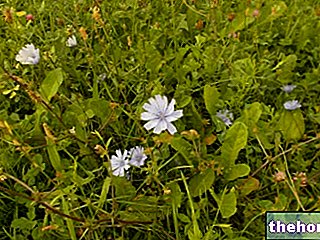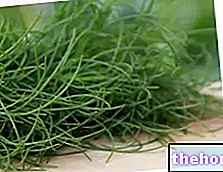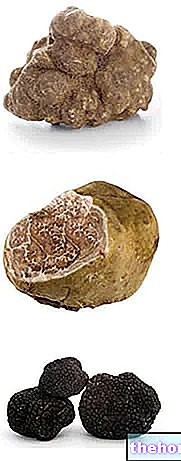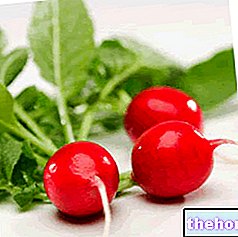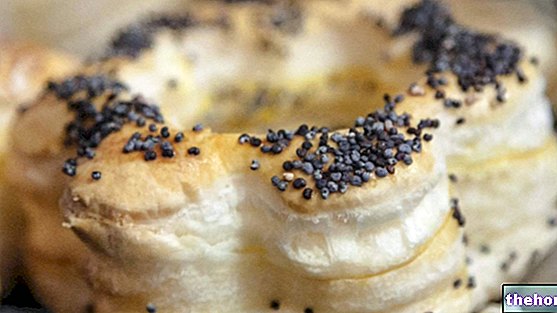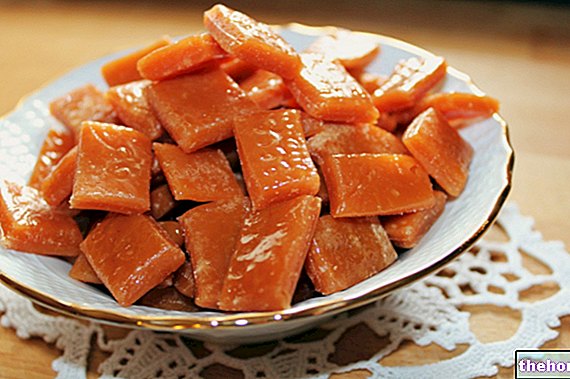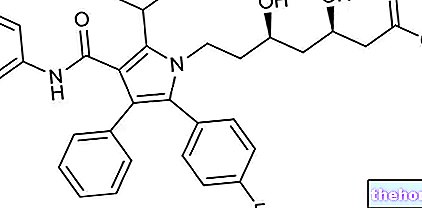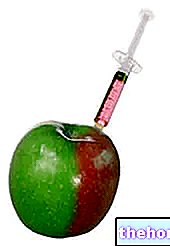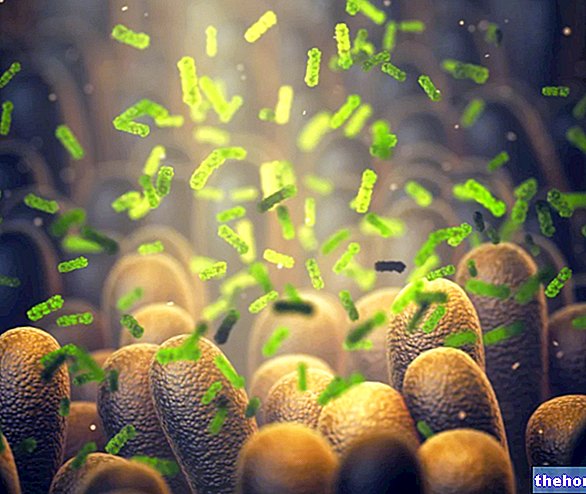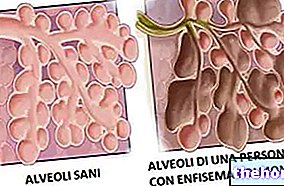Generality
Black cabbage is an edible herbaceous plant belonging to the Brassicaceae family, identified by the trinomial nomenclature Brassica oleracea acephala L., variety palmifolia.

As the name suggests, black cabbage is distinguished by its very dark color, certainly not black, but certainly dark green, almost blue. The leaves of the plant are well divided, slightly lumpy, and have a typically lanceolate shape.
Unlike cauliflower, broccoli, turnip greens, Roman cabbage, etc., black cabbage does not produce any central "head" flower; therefore, the edible portion consists of the leaves. Compared to the aforementioned, the black cabbage and the other varieties / cultivars of the subspecies acephola they are considered much closer to wild types; not surprisingly, the other leafy cabbages are also part of the acephola group, such as the Anglo-Saxons “collard greens” and “spring greens”.
On a national level, black cabbage is produced and cooked mainly in the central and central southern regions, mainly in Campania, Lazio and Tuscany; here, it is a fundamental ingredient for soups, broths, minestrone, etc.
Black cabbage is also quite well known abroad, both as a local product and as a typical food of Tuscan cuisine.
Nutritional Characteristics
Black cabbage is a low-energy food, even if it is around the average of the values among vegetables.
Energy is mainly provided by simple carbohydrates, ie fructose.
Proteins are scarce and with a low biological value.
The lipids seem almost negligible, even if the concentration of the polyunsaturated ones (beneficial for the body) exceeds that of the saturated ones; although the absolute value of these "good" molecules is quite low, it is necessary to specify that these are useful nutrients for nutritional therapy against various metabolic pathologies (dyslipidemia and hypertension, in addition to the complications of type 2 diabetes mellitus).
Cholesterol is obviously absent and fibers are abundant, a desirable feature in the diet against constipation and once again for metabolic diseases (type 2 diabetes mellitus, hypercholesterolemia, etc.).
From a saline point of view, black cabbage contains high quantities of water and potassium, a very important element for athletes, for the elderly (both categories tending to dehydration) and for those suffering from hypertension (a disease that improves with significant contributions of this mineral).
As far as vitamins are concerned, the most significant is undoubtedly C (ascorbic acid), but there is no lack of folic acid and carotenoids (pro vit. A).
In addition to carotenoids and ascorbic acid, black cabbage contains other molecules with antioxidant power, which is why it belongs to the group of foods that can help reduce the risk of cancer.
Although it is a rather interesting food, most of the recipes that include it require rather long cooking and this determines a reduction in the vitamin levels referred to the thermolabile molecules (such as vitamin C). Furthermore, remember that, when boiled in salted water, black cabbage tends to disperse many other of its nutritional elements (including non-thermolabile nutrients).
Unfortunately, in the diets of subjects potentially at risk of complications related to food infections and infestations (pregnant, elderly, immunosuppressed, etc.), heat treatment is almost routine; on the other hand, it could be replaced by the use of food disinfectants that allow you to fully enjoy the nutritional characteristics typical of black cabbage.
Finally, we specify that also black cabbage, like all brassicaceae, is a source of purines, harmful molecules for those suffering from hyperuricemia and a tendency to gout; recently, this statement has been partially contradicted but, from a clinical point of view, it is undoubtedly better not to exceed with its consumption.
We conclude by saying that, like soy, other cabbages, etc., black cabbage, when eaten raw and in large quantities, can interfere with iodine metabolism. Obviously, this mainly affects people who are already compromised or with a strong nutritional deficiency of iodine; in the event that it often and willingly returns to daily meals, it is still a good idea to make sure to guarantee the right levels of iodine with the diet.
Visual and Sensory Description
The black cabbage grows up to almost one meter in height and has dark green leaves (almost tending to blue), with an irregular and bullous surface, about two centimeters wide.

Abroad it is also known as the "dinosaur cabbage", because its irregular leaves vaguely resemble what (presumably) the skins of prehistoric creatures may have been.
For its "slightly bitter and earthy" taste, black cabbage is considered "the vegetable darling of the culinary kingdom".
Gastronomy
Black cabbage, like most other varieties of cabbage, must first be blanched (or bleached) and then sautéed with other flavoring ingredients (fats, spices, flavorings, preserved meats and fishery products, cheeses, etc.).
In Campania cuisine, black cabbage is often combined with anchovies. It is commonly used to dress pasta and as an ingredient in soups, but it can also be eaten raw in salads.
In Tuscan cuisine, black cabbage is a fundamental ingredient for the well-known “ribollita”, a thick and rich soup made from ingredients cooked twice.
As anticipated, the black cabbage is also widely used abroad.
In Dutch it is called kool zwarte (literally: black cabbage); in Montenegro and Croatia, it is known by the names of raštan, raštika or crno zelje, and is used as an ingredient in winter dishes.
Hints of Cultivation
This cultivar is very popular with growers for its intense color and crunchy texture of the leaves.
Black cabbage requires draining soils, with little clay or medium texture, with a pH close to neutral; the climate must be cool to avoid fruiting.
Sowing is recommended in seedbeds from March to June and transplanted in the open field from July to August; the distance between the plants must be between 40 and 50cm. The waterings must be regular, frequent to keep it soft and more sparse to increase its consistency.
The black cabbage harvest begins in the fall and ends in the winter, before it acquires too much woodiness. The leaves are typically harvested from the bottom of the stem towards the center, keeping the plant intact in the center, so that it can produce new leaf mass; this makes it look like a miniature palm tree.
The production of black cabbage is around 15-20kg per 10m square.
Among the main adversities of the black cabbage are: the cabbage larva or Pieris rapae (for heavy infestations it is recommended to use the Bacillus thuringiensis var. kurstaki, waiting 3 days before harvesting) and the cabbage hernia (it is advisable to uproot and burn the afflicted plants, to avoid water stagnation and to rotate the crops).
Origins of Leafy Cabbages
Smooth-leaved varieties were already cultivated in Greece in the 4th century BC. Called by the ancient Romans "Cavoli Sabellici", they are considered the ancestors of all modern cultivars of acephola.
Until the end of the Middle Ages, leafy cabbages (including black cabbage) were among the most common vegetables found in Europe. Today the numerous varieties differ according to the length of the stem (low, medium or high) and the type of leaves. The colors oscillate between: pale green, purplish green, dark green and purple-brown.
In Italy, the first evidence of black cabbage proper dates back to the 18th century AD. It was also mentioned by Thomas Jefferson among the 1777 plants present in his Monticello garden.
Other Foods - Vegetables Garlic Agretti Asparagus Basil Beets Borage Broccoli Capers Artichokes Carrots Catalonia Brussels sprouts Cauliflower Cabbage and Savoy cabbage Red cabbage Cucumber Chicory Turnip greens Onion Sauerkraut Watercress Edamame Chives Chanterelles Flour Cassava Flowers Pumpkin Flour Edible Flowers Pumpkin Seasonal Fruits and Vegetables Endive Salads and Salads Strengthening Salad Lettuce Aubergines Vegetables Nettle Pak-Choi Parsnip Potatoes American Potato Peppers Pinzimonio Tomatoes Leeks Parsley Radicchio Turnips Red Turnips Radishes Rocket Shallots Endive Celery Celeriac Seeds Sprouted Spinach Truffle Valianamberi or Jerusalem artichoke laxatives Saffron Pumpkin Zucchini Vegetables - Nutritional properties OTHER VEGETABLE ITEMS Categories Food Alcoholics Meat Cereals and derivatives Sweeteners Sweets Offal Fruit Dried fruit Milk and derivatives Legumes Oils and fats Fish and fishery products Cold cuts S pezie Vegetables Health recipes Appetizers Bread, Pizza and Brioche First courses Second courses Vegetables and Salads Sweets and Desserts Ice creams and sorbets Syrups, liqueurs and grappa Basic preparations ---- In the kitchen with leftovers Carnival recipes Christmas recipes Light diet recipes Women's Day, Mum, Dad Recipes Functional Recipes International Recipes Easter Recipes Recipes for Celiacs Recipes for Diabetics Recipes for Holidays Recipes for Valentine's Day Recipes for Vegetarians Protein Recipes Regional Recipes Vegan Recipes

